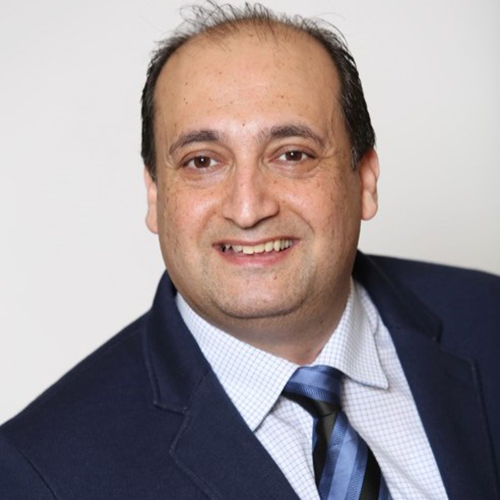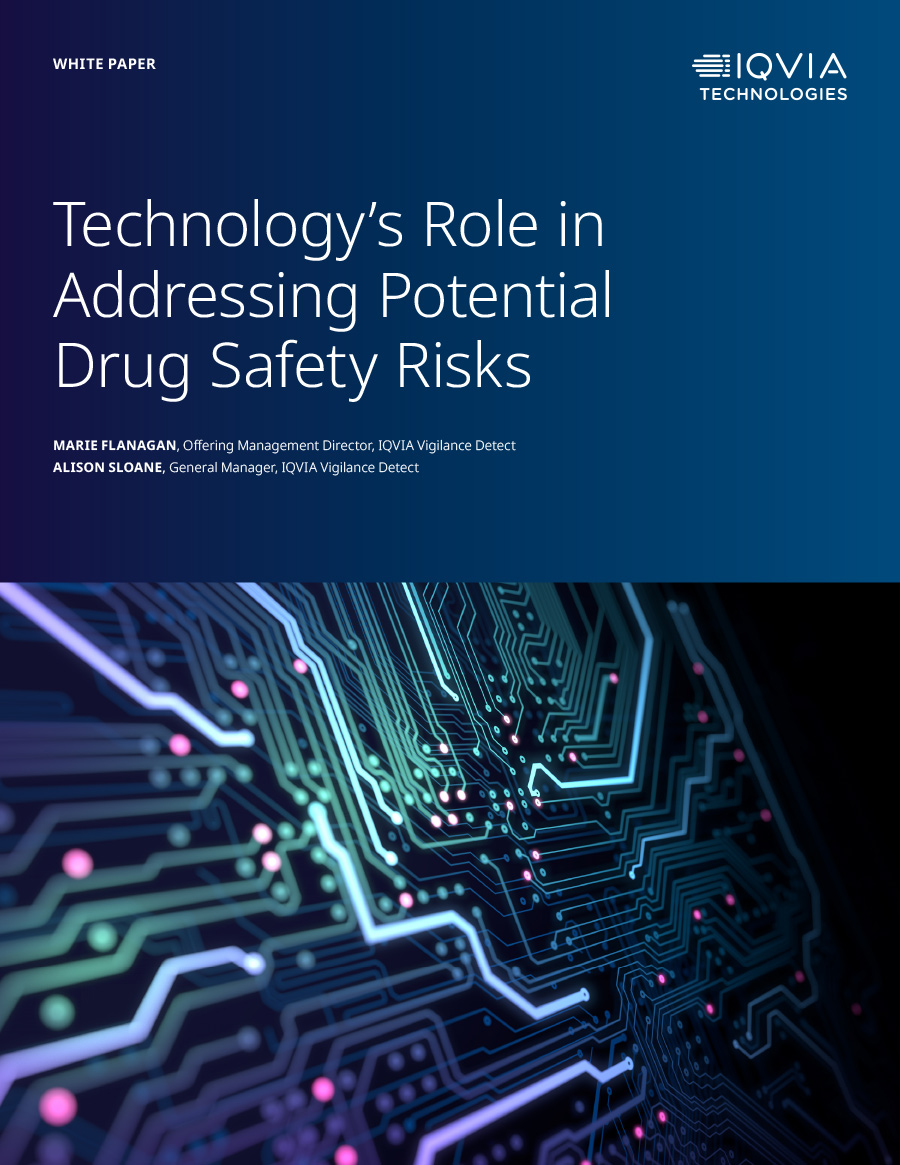Table of Contents
- WE ARE DIA
- Global Chief Executive Message: Illumination, Information, Innovation, and Inclusion
- Feature Articles
- The New Frontier of Spatial Biomarkers: Digital Pathology and Spatial Genomics
- Thoughtful Consideration of Disabilities in Clinical Trials
- Life Officially Split in Two
One Appendix Cancer Patient’s Journey through Discovery and Recovery
- COMMENTARY
- How to Build Trust in Clinical Research in Communities of Color
- MEETING HIGHLIGHTS: DIA China 2023
- NMPA Plans to Start PIC/S Accession Procedure in 2023
- Implementation of China’s Marketing Authorization Holder System: Opportunities and Challenges
- MEETING HIGHLIGHTS: DIA India 10th Anniversary Pharmacovigilance Conference
- Impact of Technology on the Current and Future States of Pharmacovigilance
- AROUND THE GLOBE
 Podcast: Retiring TGA Head Maps Australia’s Post-Pandemic Future
Podcast: Retiring TGA Head Maps Australia’s Post-Pandemic Future- Advancing Biopharmaceutical Innovation and Patient Access: Call to Action for Latin American Regulators
- WHITE PAPERS
- IQVIA: Technology’s Role in Addressing Potential Drug Safety Risks
- EXECUTIVE LEADERSHIP
- Editorial Board
Subscribe
Love Global Forum’s new online format? Subscribe today and never miss an issue.
Editorial Board
Content stream editors
Gary Kelloff US National Institutes of Health
Ilan Kirsch Adaptive Biotechnologies Corp.
regulatory science
Isaac Rodriguez-Chavez Independent Consultant
Patient engagement
Chi Pakarinen MediPaCe
Natasha Ratcliffe Patient Engagement Specialist
Thomas Smith Independent Patient Consultant
Data and Digital
Lisa Barbadora Barbadora Ink
Young Professionals Editor
Editorial Staff
Sandra Blumenrath, Managing Editor, Scientific Publications DIA Scientific Communications
Chris M. Slawecki, Senior Digital Copyeditor DIA Scientific Communications
Linda Felaco, Copy Editor and Proofreader
Regional Editors
David Mukanga Bill and Melinda Gates Foundation
ASEAN
Jin Shun Sandoz
AUSTRALIA/NEW ZEALAND
Richard Day University of New South Wales, Medicine, St. Vincent’s Hospital
CHINA
Ling Su Shenyang Pharmaceutical University, Lilly Asia Ventures
Europe
Julie O’Brien Pfizer
INDIA
J. Vijay Venkatraman Oviya MedSafe
JAPAN
Ozawa Goshi Real Discovery Outdoors Co,. Ltd.
LATIN AMERICA
Cammilla Gomes Roche
USA
Ebony Dashiell-Aje BioMarin
DIA Membership
Bringing together stakeholders for the betterment of global health care.
Executive Leadership
Illumination, Information, Innovation, and Inclusion

y first DIA Global Annual Meeting was a tremendous capstone to my first six months with DIA and provides an ideal inflection point to simultaneously look back and look ahead. It is in many ways the beginning and culmination of DIA’s international, yearly conference and workshop calendar in Latin America, the Middle East, Europe, Japan, China, Canada, Singapore, and the US.
Parexel
arnessing the strengths of spatial biomarkers offered by digital pathology and spatial genomics can give researchers deeper understanding of disease complexity, help pinpoint new therapeutic targets, and forge the path towards more precise and efficacious therapies. These transformative technologies have the potential to revolutionize precision medicine and accelerate the development of novel therapies for various diseases. As a result, major stakeholders, including large biopharmaceutical companies, research institutions, genomics laboratories, diagnostic developers, and data analytics and AI companies, are increasingly focusing their attention and investments on these new frontiers.
Canary Advisors
he prevalence of adults living with disabilities varies widely from country to country. In Malta, 11% of the population has one or more disabilities. In Latvia, the figure is closer to 40%. Across the European Union (EU), an average of 24% are living with disabilities, and the proportion of those with disabilities only increases over time. Those living with disabilities are four times more likely to report that their healthcare needs are unmet, which may well lead them to pursuing clinical research as a care option.
Of course, awareness of disabilities is just the first step in designing clinical trials that are accessible to patients, irrespective of the particulars of the conditions they’re experiencing.
One Appendix Cancer Patient’s Journey through Discovery and Recovery
DIA
ppendix cancer is truly a silent, deadly killer. Appendix cancer has no effective diagnostic test or monitor. Most patients discover they have appendix cancer when it is found during an unrelated surgical procedure.
Cancer may be silent, but cancer patients are not. Here is the story of our own Katie Hill, DIA Senior Vice President & Managing Director for Learning and Digital Solutions. She, like many others, “accidentally” discovered through another medical procedure that she had appendix cancer. Below, Katie shares how she found her own treatment path and patient advocacy voice, and discovered how her own voice can also benefit others.
Cancer in the Know
’ve been to many conferences and heard a lot of talk about how to engage underrepresented populations, especially in Black/African-American communities, to enroll in clinical trials. Far too often, too many conferences place these discussions about enrolling missing populations at the end of their meeting or conference. By that time, the people who would benefit most from these solutions, or need to hear them the most, are often more concerned about getting home to their loved ones or may have already left the conference altogether. (My opportunity to speak was scheduled and presented on the first day of DIA GAM 2023; it was directly after the opening plenary session, while all attendees were still present and energized.)
Harbour BioMed
ince initiating the process of pre-accession to the Pharmaceutical Inspection Co-operation Scheme (PIC/S) in September 2021, the National Medical Products Administration (NMPA) of China has been actively participating in PIC/S-related activities and the progress has always been a focus of attention of the industry. In June 2023, a dedicated PIC/S symposium was held during the DIA China Annual Meeting where it was officially reported for the first time that NMPA’s pre-accession procedure has been successfully completed and NMPA will make a formal application for accession to PIC/S in 2023. This marks China’s active convergence with international standards to expedite the globalization process.
Opportunities and Challenges
Pfizer China R&D Center
GSK China Investment
fter a four-year pilot program in 10 provinces, China’s MAH-based regulatory system was officially established with the implementation of the Drug Administration Law on December 1, 2019. Under this system, MAHs are authorized to produce drugs themselves or contract the production to drug manufacturing companies. As a result, the group of “B certificate holding companies” (companies with drug products that have entered the commercialization stage but do not yet have their own production capabilities) has grown significantly, becoming one of the main features of China’s pharmaceutical industry. At this stage of early implementation of a new regulatory mechanism, the trend of rapidly increasing numbers of MAHs entrusting contract development and manufacturing organizations (CDMOs) for drug manufacturing becomes a potential regulatory concern.
Oviya MedSafe
Oviya MedSafe
echnology significantly enhances the advancement of pharmacovigilance, facilitating the development and adoption of more effective practices, and paves the way for a forward-looking roadmap. The 10th annual DIA India Pharmacovigilance Conference 2023, under the theme Redesigning and Transforming PV for Augmenting Patient Safety, explored the influence of technology on the present and future pharmacovigilance (PV) landscape.
White Paper
White Paper
Around the Globe: Australia
Around the Globe: Latin America
WESSX Inc.
he need for further regulatory convergence and collaboration among regulators in Latin America remains an urgent topic. This article advances this discussion by expressing the strategic vision and professional legacy of Dr. Rafael Pérez Cristiá, a leading advocate for strengthening the region’s medicines regulatory systems. It also proposes how regulators in Latin America can leverage an initiative envisioned during his three-decade tenure as head and director of the Cuban Regulatory Authority (CECMED) and support advancing healthcare innovation in the region through knowledge sharing and training in regulatory sciences.







